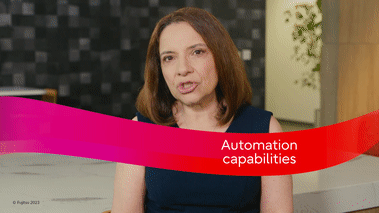
One of the great things about O-RAN is that you can combine equipment and software from multiple vendors. But sometimes things that look great on paper don’t work out as you might expect.
I’m Ladan Pickering. Let’s have an open dialogue about O-RAN system integration.
Integration is critical to O-RAN deployment
Integration is a critical aspect of deploying O-RAN networks and failure is not an option.
Even a multivendor design that complies to the O-RAN specifications can lead to interoperability issues when implemented in the network.
Successfully integrating an O-RAN solution is no easy task. It requires a central point of system integration, a team of expert technical personnel, and a well-equipped lab environment. Automation and AI must be utilized to ensure successful and timely completion of the integration project. And the solution must be managed throughout its life cycle.
Key elements of O-RAN integration
Let’s briefly explore the key elements involved in integrating an O-RAN solution.
O-RAN integration projects demand a single point of management to coordinate and oversee the contributions of each vendor. The system integrator ensures that the integration project is effectively managed, similar to other integration projects.
However, in O-RAN, the system integrator plays a crucial role in resolving issues and ensuring that there is no “finger pointing” between vendors, facilitating timely problem resolution.
Multivendor testing needs the right expertise
Testing is always a challenge in any multivendor solution, but O-RAN testing presents additional complexity. It involves a multivendor system that goes beyond basic compliance testing and requires expertise across various disciplines, including traditional telecom, wireless, IP, and cloud. These experts are responsible for designing and conducting interoperability tests in a laboratory environment that replicates the O-RAN network itself.
AI-enabled, automated testing saves time & resources
It’s been said that if O-RAN testing were to be performed solely by humans, it would take years, which is why AI-enabled, automated testing and analytics tools are essential. They are faster and more efficient than traditional methods, conserving resources and improving O-RAN testing and validation by reducing overall workload and potential errors. Additionally, these tools accelerate data analysis when needed.
Planning for solution lifecycle evolution
Network solutions, especially open ones, evolve over time. Therefore, managing O-RAN solutions from a holistic perspective throughout their lifecycle is crucial.
Ongoing changes must be integrated and retested to ensure network performance is not degraded and software, hardware and cloud resources within the solution evolve.
Think of it as product management for O-RAN solution itself.
In-house resources may not be available
Integrating O-RAN requires dedicated resources, including personnel, laboratory environments and automation tools. These are resources that you may not currently possess.
Instead of tackling the challenges alone, why not discover how Fujitsu can assist you in overcoming the hurdles of O-RAN integration? We can provide everything you need to ensure your O-RAN solution is fully integrated and interoperable.
Our offerings include experienced personnel, automation capabilities, and a state-of-the-art integration lab. Furthermore, we are prepared to manage your solution’s entire lifecycle. Our goal is to help you achieve the highest standard of reliability and performance throughout the lifespan of your 5G O-RAN investments.
Reach out to us and share your O-RAN goals and challenges. Let’s have a conversation and explore how we can contribute to your success.
Reach out to us and share your O-RAN goals and challenges.
Let’s have a conversation and explore how we can contribute to your success.